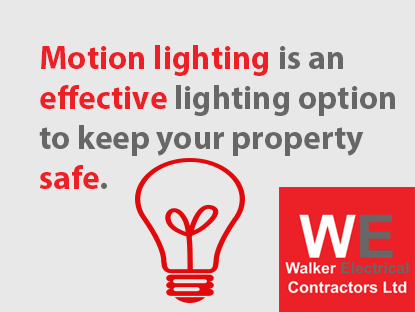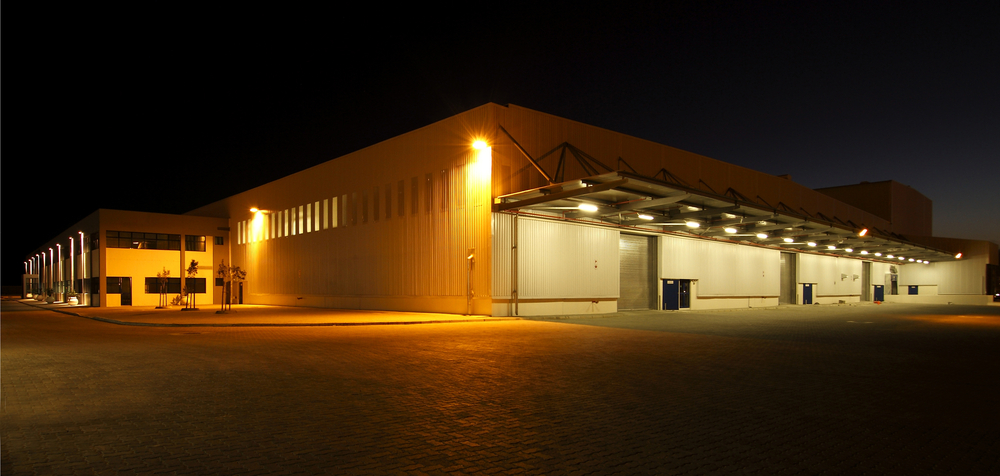Motion lighting in a residential or accommodation based setting has a range of uses, from external security lighting to stairwells and lobbies. Here at Walker Electrical we are Preston’s leading lighting experts. As a result, we have produced this guide to residential motion lighting.

What is motion lighting?
Motion lighting works using PIR sensors. These detect motion in a room and activate the lights. The lights will then stay on as long as motion is detected, and for a specified amount of time after this. As a result, you dont need to rely on switches to turn the lights on or off. This improves security within shared accommodation and residential buildings, as intruders cannot hide in the dark corridors.
In addition, it can also help reduce electricity costs, as the lighting will not be left on in shared areas over a long duration. This is because it will turn itself off after a specified amount of time.
Residential motion lighting
Within a residential setting, motion lighting can be used:
- Internally
- Within shared areas such as stairwells, corridors, kitchens, halls, and lobbies.
- Externally
- Around the exterior of the property as security lighting.
Trouble shooting motion lighting
Occasionally your motion lighting can stop working effectively. This generally manifests by the motion lighting being left on all the time. This can be caused by a range of issues including:
- Sensitivity settings being too high which means the lighting is likely to be triggered for any little movement.
- Duration settings being incorrect which means that the lighting will stay on for very long periods of time.
In summary
Residential motion lighting is incredibly useful. It can help save money, and it can keep the property safe. Why not contact us at Walker Electrical for motion lighting installation, or to help you resolve any motion lighting issues.
